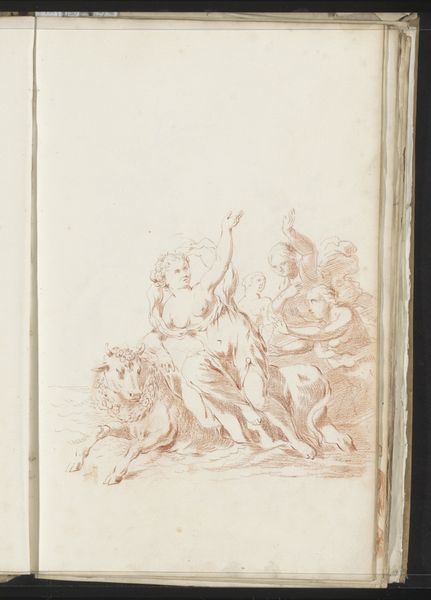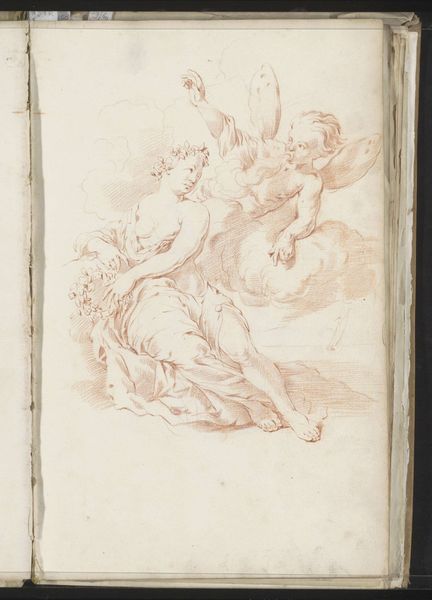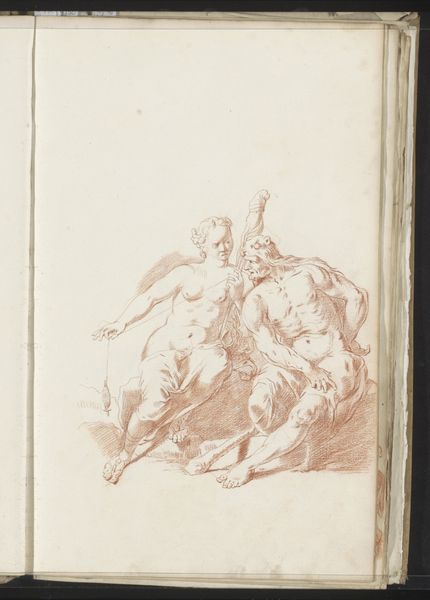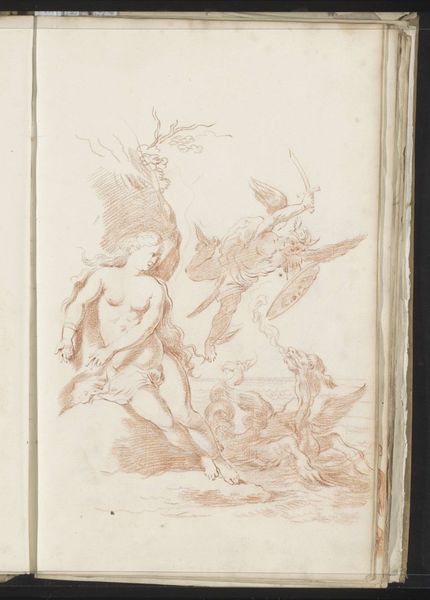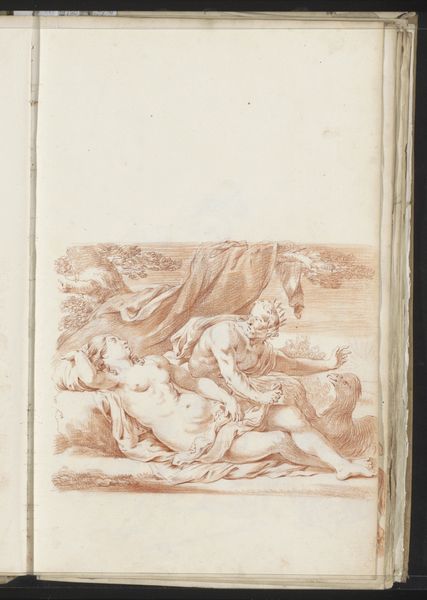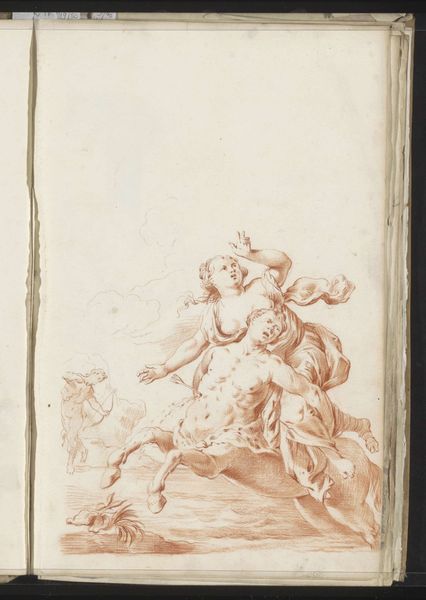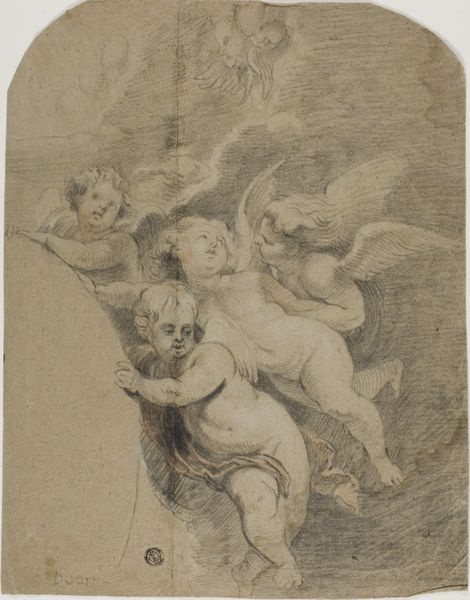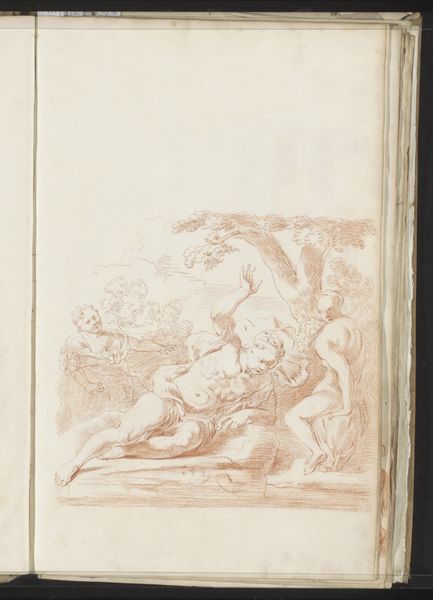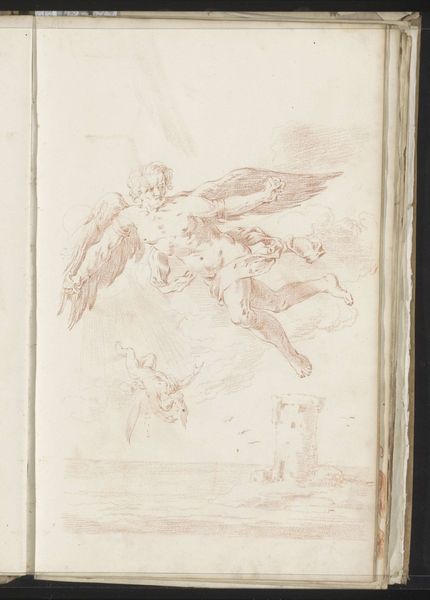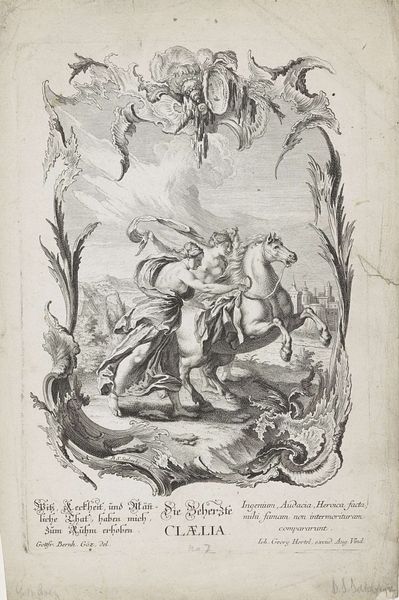
drawing, pen
#
drawing
#
allegory
#
baroque
#
pen sketch
#
landscape
#
figuration
#
pen
Copyright: Rijks Museum: Open Domain
Jacob Toorenvliet rendered this image of Aurora, the Roman goddess of dawn, in red chalk. But what do such mythological figures mean for the Dutch Republic, where it was likely made? Well, the Dutch Golden Age was a period of immense economic growth, driven by global trade. Classical imagery, like Aurora here, served as an artistic language understood across Europe. Aurora, ushering in the daylight, symbolized progress and enlightenment. In the hands of Dutch artists, she represented the Republic’s own burgeoning success. The art market in the Netherlands was unique, as it was not dominated by church or state commissions, but rather by private citizens, so it is likely that Toorenvliet was working for a wealthy patron who wanted to make a statement about their belief in the nation's growing global power. To fully grasp Toorenvliet’s "Aurora," we need to dig deeper into the cultural and economic history of the Dutch Golden Age, looking into archival records and contemporary writings. That will give us a clearer picture of how art reflected and shaped the Republic’s identity on the world stage.
Comments
No comments
Be the first to comment and join the conversation on the ultimate creative platform.
